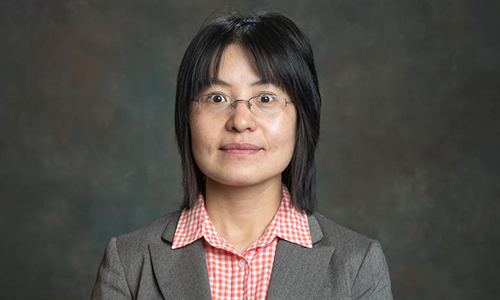
“Light Extraction and Nanomaterials for III-Nitride Based White Light-Emitting Diodes”
By Dr. Peifen Zhu, Visiting Assistant Professor, Department of Physics and Engineering Physics, University of Tulsa
Monday, April 20th, 2015 from 3:05 – 3:55 p.m. in WEB 1230
Abstract
The importance of having low-cost and practical technology for improving the efficiency of solid-state lighting is key for the practical implementation of this technology for general illumination market. The thin-film flip-chip (TFFC) LED has been pursued as the state-of-the-art LED technology, which has been shown to have improved extraction by 1.6 times over the conventional planar LED technology. The combination of the thin-film concept with flip-chip technology provided surface brightness and flux output advantages over conventional LED, and currently the TFFC LEDs are widely used in industry for improved performance. To improve the light extraction further in TFFC LEDs, both surface roughness and photonic crystal methods had been implemented.
In this talk, the use of self-assembled colloidal microlens arrays with rapid convective deposition (RCD) method will be demonstrated in both GaN and organic LEDs. The use of rapid convective deposition method enables roll-to-roll printing process of microsphere and nanosphere arrays on large wafer area applicable for manufacturing of large area LED technology. Comprehensive studies were carried out to analyze the light extraction efficiency of conventional top-emitting III-Nitride LEDs with microsphere arrays and TFFC LEDs with microsphere arrays deposited via rapid convective deposition process. The device structure was engineered to achieve optimum light extraction by varying refractive indices of spheres, the diameters of spheres, packing density and packing geometry of microsphere arrays. The optimized device structure is TFFC LED with hexagonal close-packed TiO2 sphere arrays. The use of hexagonal close-packed monolayer of TiO2 microsphere arrays on TFFC LED results in light extraction of 75%, which is 3.6 times higher than that of TFFC LEDs with planar surface. Further optimization by using microlens arrays on TFFC LED results in light extraction efficiency of 86%, which is 1.3 times higher than that of state-of-the-art TFFC LED with surface roughness approach. The key advantage of the self-assembled colloidal process is the ability for implementation of roll-to-roll printing method for large wafer scale manufacturing process.
Biography
Peifen Zhu obtained her PhD in electrical engineering from Lehigh University in November 2014. She received a BS in Physics from Liaocheng University, China and an MS in Physics from Jilin University, China. Peifen has been a visiting Assistant Professor in the Department of Physics and Engineering Physics at the University of Tulsa since August 2014. Her research is focused on functional material synthesis and characterization, device modeling and fabrication, implementation of functional materials in device technologies for energy efficiency, and renewable energy applications.